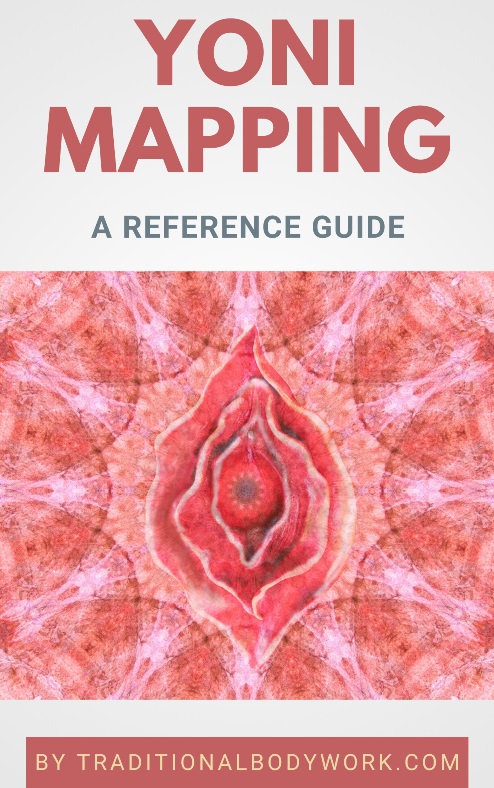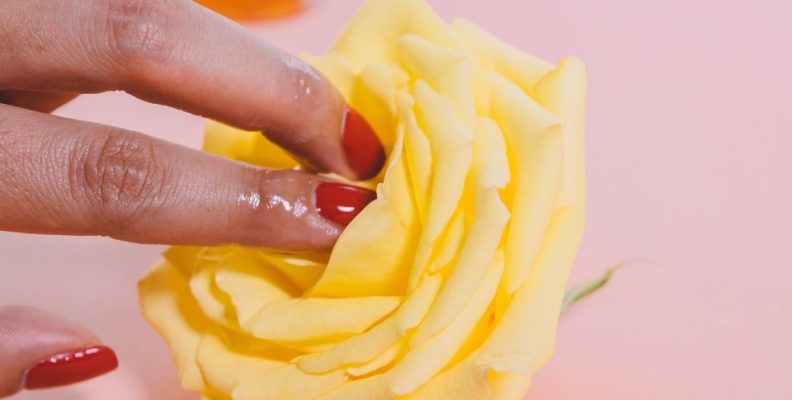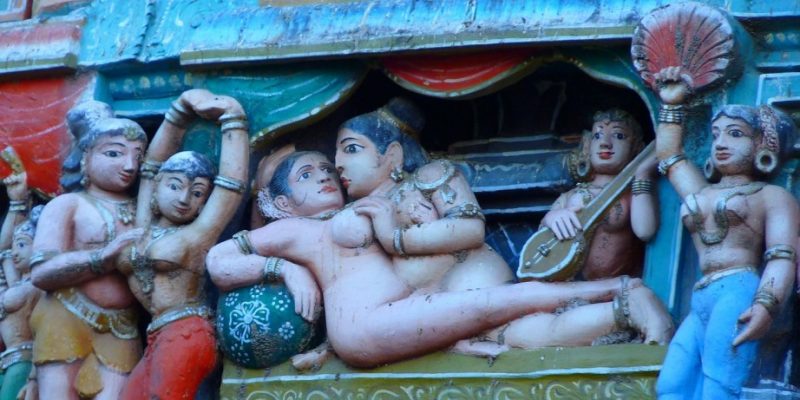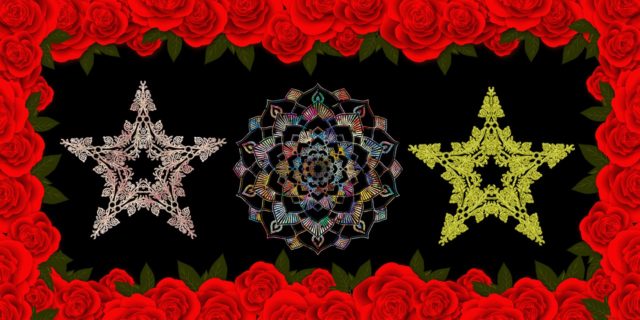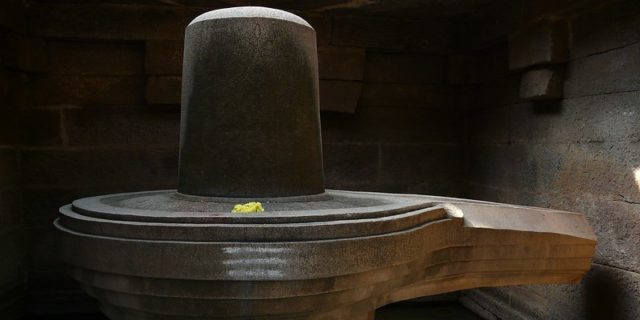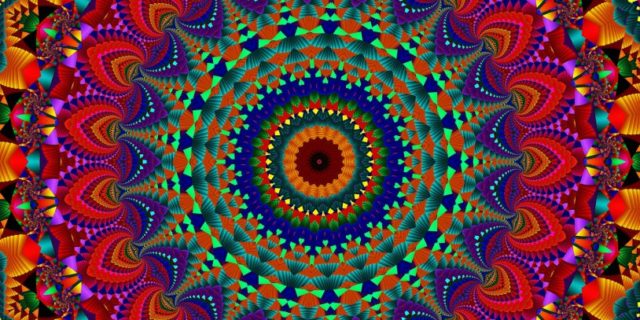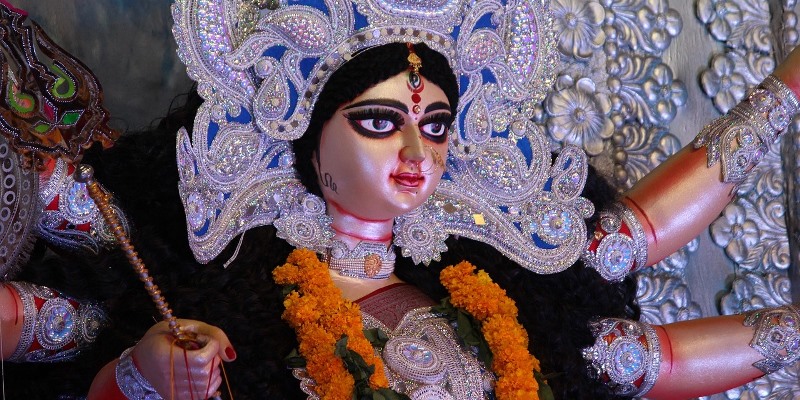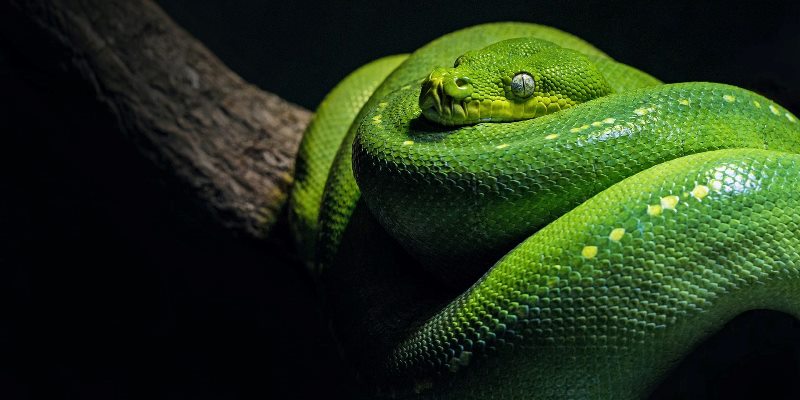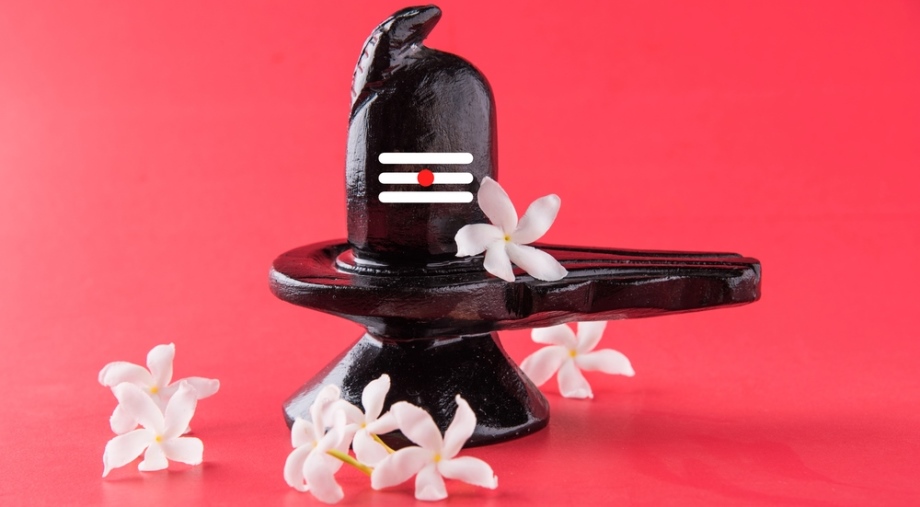
The word Yoni is often used as a synonym of the word vagina, but that’s a very limited use of a concept with very vast spiritual meanings. Yoni is a broad topic and in this post we embark on the wider context and meaning of the Indic Vedic Yoni concept.

The Yoni concept has its origins in India and has cosmological, spiritual, emotional, psychological and physical connotations and up to today it plays an important role both in the Hindu religion and in Ayurveda traditional medicine.
Yoni is a Sanskrit word — Sanskrit is the ancient Indian language — that appears in several texts in the Vedas, the latter being a large and presumably the oldest collection of sacred religious and spiritual texts of ancient India.
The Yoni is usually represented symbolically in the form of a horizontally positioned square, ellipse or round base with an edge and an opening in the center. Typically you will see a cylindrical shaped Lingam (the Yoni’s masculine counterpart) placed, standing up in the center. One can encounter Yoni icons in Vedic literature, in many Indic art forms, shrines and in Hindu temples.
The idea, scope and meaning of the word Yoni and what it stands for is vast. It’s used in many ways, such as source, origin, nest, place of birth, the womb, beginnings, abode, incubator, creator, fertility, family, race, caste, grain, seed, among other synonyms.
In ancient Indian cosmological theories and conceptions, the Yoni is the representation of the material cause of the universe, that is, the mother source or inherent background of the universe. The Yoni refers to the female principle in all known life forms including its seasonal, regenerative, and vegetative cycles.
In many Indian religious and spiritual traditions, the Yoni is of key importance, notably in Shaktism and Shaivism as well as in Kaula and Tantra lineages. The Yoni, together with the Lingam, symbolizes the cyclic creation and dissolution of the universe and of all individual life forms. The Yoni-Lingam iconography shows that Life and Death, its expressions and interactions are an inherent unity in duality.

The Yoni is also seen as an an-iconic symbol of Shakti, which is interpreted as the supreme elemental dynamic cosmic energy representing power, ability, strength, force, effort, energy, and capability. Shakti then is a conceptualization and personification of inherent sacred feminine creative power, also referred to as Amma, Devi, “The Mother,” or “The Great Divine Mother.” This power manifests itself through females, active creativity and fertility, although this energy is also present in males, but in its latent form.
It’s believed that Shakti Energy is underlying force responsible for creation and change. It’s here where the notion of the Goddess arises, seeing Shakti as being incarnated and embodied in various female Hindu Goddesses or Devis.
The Yoni has been a divine symbol in ancient times across many civilizations globally. Although called Yoni in India, it arose under other names and representations in various early cultures and societies. In Southeast Asia, for instance, Yoni icons with the Lingam placed into it are encountered in ancient stone temples, in reliefs and murals in a multitude of countries, such as Indonesia, Cambodia, Vietnam, and Thailand.
As already mentioned at the start of this article, in a more restricted physical sense the word Yoni is used as a referral to the feminine regenerative and reproductive organs. It then includes the vagina, uterus, clitoris, cervix, ovaries, vulva, endometrium, and Fallopian tubes.
In Indic Ayurvedic medicine we find many treatment modalities addressing the Yoni, such as for instance, Yoni Prakshalanam, Yoni Pichu, Avagaha Sveda Yoni Sitz Bath, Uttara Basti, among others.
The various Ayurveda Yoni treatments that cover Yoni Roga, or gynecological disorders, are therapies to cure certain diseases, discomforts or illnesses such as Yoni Daha (burning sensation in the vagina or vulva), Yoni Srava (excessive vaginal discharge), Yoni Kandu (an itching vulva), Yoni Viyapada (candidiasis), to give some examples.
Many of the Yoni treatments that exist in Ayurvedic medicine can be found in other parts of the world or in other traditional healing systems also. Think of treatments like vaginal steaming and vaginal Sitzbaths, which are treatment modalities, with local adaptions, used across the globe.
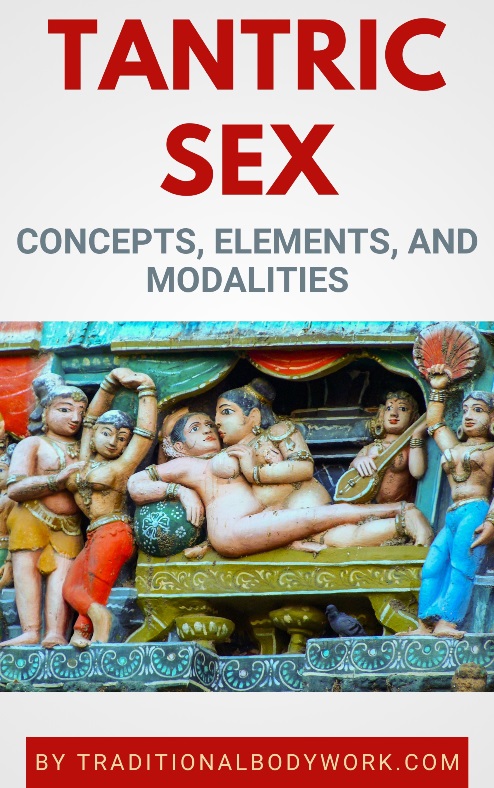
The well-known Yoni Massage however, today very trending around the globe, is absent in Ayurvedic medicine and basically found its way through what is now called the Neo-Tantra movement. It’s why Yoni Massage treatments are often called Yoni Tantric Massage or Tantric Vaginal Massage, and such.
Mind however, that the Yoni as a reference to the womb, fertility, procreation, and “the Mother” has, over time, created many difficulties for women, not only in India, but around the world.
The problem that arose is the idea that a woman is fully woman only if she is able to create, procreate, that is, have babies, and moreover, is expected to be a caring, loving, self-sacrificing mother. This has in some way robbed women of their personal dignity and individuality and of their own intrinsic value.
For instance, it means that a woman should not pursue, have or experience sexual or other pleasures for herself, and only sacrifice her life as a mother or a “good” housewife. It also means that she’s unworthy, named and shamed if she does otherwise or cannot “produce babies.” Another important aspect of “shaming” aspect directly connected to the physical Yoni is the woman’s menstrual cycle, childbirth, and the postpartum period which, traditionally in many societies and cultures, has been seen as something “dirty,” something that needs to be “cleansed.”
Of course, the “bloody” aspect of a woman’s period and menstruation or childbirth incites to”cleansing,” which has valid hygienic reasons. Yet, it too often became connected to being a woman, as being something impure, to be avoided, hidden, something that brings the worth of a woman down.

In that sense, and without going into an analysis of works like the Indian Kama Sutra or spiritual lineages such as Tantra, we can conclude that the Neo-Tantra movement, surfacing in the 1960s in the West, has increasingly promoted the liberation of women when it comes to experiencing and accepting her body, pleasure and emotional fulfillment as something normal and worth of pursuit — as a whole — on a sexual, non-sexual and spiritual level.
What is there today as Tantric Sex, Tantric Massage, Lingam Massage, or Yoni Massage, Yoni Mapping, and the like, all found their way through the Neo-Tantra movement, yet it’s unlikely that any of this was present in the original Indic religious and spiritual Tantra lineages and philosophies.
What’s clear however, is that there’s ongoing work to do for women to liberate themselves from sexual suppression, from women-unfriendly patterns and practices in society, and from the mental, psychological and physical blockages and traumas because of those. This is certainly not only something that concerns the West, but also cultures and societies, may they be African, South American, or Asian.


